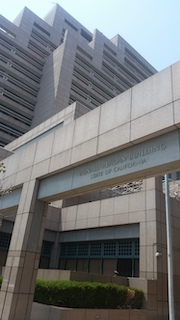The following summary of a recent Second Appellate District ruling spotlights whether it is improper for a judge to look at the preliminary hearing transcript in a prima facie review of an SB1437 petition for a person who was the actual killer and not convicted under a felony murder or natural and probable consequences theory.
After all, if the person seeking resentencing was the actual killer, must the court engage in an evidentiary hearing that would otherwise be a waste of judicial resources? Put another way, if the preliminary hearing transcript does not have the evidentiary weight of a jury’s finding of guilt at trial, is it always error to consider it in a prima facie review of a 1437 petition?
A review of the facts of the case will give some context to help appreciate this issue. In 1998, Perez was charged with one count of second-degree murder and the complaint alleged he personally used a dangerous or deadly weapon, a hammer, within the meaning of Penal Code § 12022(b)(1). The crime was not charged under a felony-murder or natural and probable consequences theory. He was not an aider and abettor and there was not a separate underlying felony such as a robbery or burglary.
In 1999, Perez pleaded no contest to the single count and admitted the special allegation that he used a hammer as a dangerous or deadly weapon of the crime. His attorney stipulated to a factual basis for the plea, but she did not reference the preliminary hearing transcript. The judge then sentenced Perez to a life term with a 15-year minimum parole eligibility date. Perez did not appeal.
About twenty years later, in 2019, Perez, representing himself, filed a form petition for resentencing, with a supporting declaration stating he had met the requirements under Penal Code § 1170.95 (SB 1437) for relief. He stated, incorrectly, that: (1) he had faced an information or complaint allowing the prosecution to proceed against him on a felony murder or natural and probable consequences doctrine; (2) he pleaded guilty or no contest to first or second-degree murder in lieu of going to trial because he believed he could have been convicted of first or second-degree murder at trial under the felony murder rule or the natural and probable consequences doctrine; and (3) he could not be convicted of first or second-degree murder under changes to sections 188 and 189.
 CA 2nd Appellate District LA
CA 2nd Appellate District LA
However, Perez did not check the block on the form petition stating he was not the actual killer or the box stating he was not a direct aider and abettor who acted with the intent to kill. He also did not check the block stating he was not a major participant in the felony or did not act with reckless indifference to human life.
The superior court appointed counsel to represent Perez. The People filed a response to the petition, stating that Perez did not qualify for resentencing because the record of conviction showed he acted with malice aforethought as the actual killer. The People attached the preliminary hearing transcript. Perez filed a reply, but it did not argue he was not the actual killer.
The trial court denied the petition, finding that Perez was the actual killer and also admitted personal use of a deadly weapon in the commission of the offense. The judge relied upon the preliminary hearing transcript, in which two witnesses testified that they saw Perez repeatedly and forcefully striking his wife with a hammer to the back of her head.
Perez appealed the ruling to the Second Appellate District, arguing that the trial court erred by not issuing an order to show cause and holding an evidentiary hearing. He also argued that the trial court erred by relying upon the preliminary hearing transcript, which violated his Sixth Amendment right to a jury trial.
The Second Appellate District Court ruled that the trial court did not err in relying upon the preliminary hearing transcript as part of the second step of the court’s prima facie review of the petition.
The first step is to see if petitioner states he is eligible for relief and if so, to appoint counsel. The prosecution then can file a response and the judge can consider it and the exhibits thereto.
In the second step, the court will consider the reply of the petitioner to see if he or she rebuts the facts alleged in the response. Here, Perez’s reply did not refute the facts alleged in the response that Perez was the actual killer, so the trial court’s denial of the petition without issuing an order to show cause or setting an evidentiary hearing was proper.
The citation for the Second Appellate District Court ruling discussed above is People v Luis Alfredo Perez (2nd App. Dist. 2020) 54 Cal. App. 5th 896, 268 Cal. Rptr. 3d 773.
For more information about SB 1437 petitions, please click on the following articles:
 CA 2nd Appellate District LA
CA 2nd Appellate District LA